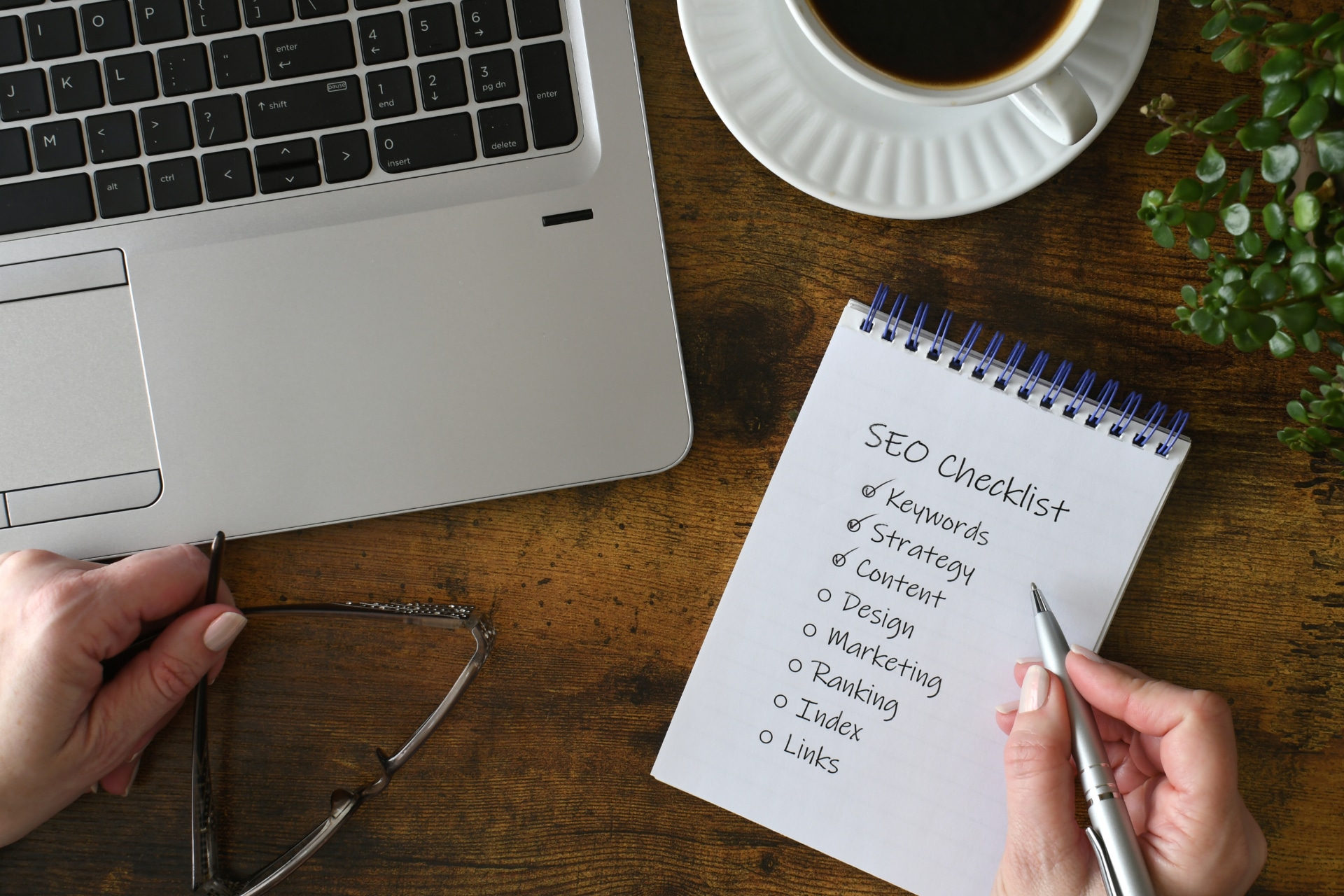Integrating SEO with PPC: A Unified Approach to Digital Marketing
Pay-Per-Click (PPC) and SEO (Search Engine Optimization) are two important ways to get more people to see your website. SEO works to improve your site’s search results for long-term growth, while PPC uses paid ads to bring you visitors right away.
Maybe there is just one approach needed. PPC and SEO together produce a complete strategy that balances natural reach with immediate visibility. This helps companies since it attracts new business and promotes more connection among present consumers.
This article covers how these two strategies work together, the SEO and PPC benefits, and best practices for getting the most out of each.
Understanding SEO and PPC
SEO and PPC are two essential search engine marketing (SEM) strategies that help businesses improve their online presence. While SEO focuses on long-term organic rankings, PPC delivers instant visibility through paid ads. Combining the two can boost digital marketing campaign results quicker and expose more.
What is SEO?
Search engine optimization (SEO) makes a website more visible in natural search results even without being dependent on sponsored advertising. Drawing relevant traffic calls both technical improvements, content planning, and keyword optimization.
Good SEO demands continuous effort. Rankings rely on on-page factors including content quality, meta tags, and user experience; off-page elements establish domain authority.
Technical aspects affecting search performance could be site speed and mobile friendliness. SEO offers sustainable traffic without ongoing advertising costs, hence it is a cheap approach even if it takes time to show results.
What is PPC?
Pay-per- click (PPC) advertising lets companies bid on keywords to show sponsored ads on digital media or search results. Unlike SEO, PPC generates instant placements given a strong bidding strategy and appealing ad language.
PPC advertisements operate on Google Ads, Bing Ads, and social networking sites among other platforms. Maximizing for clicks, impressions, or conversions, advertisers control their budget, audience targeting, and bidding strategy. By tracking the position and cost-per- click of an advertisement, Google’s Quality Score ensures congruence with search intent. PPC helps companies introducing new products or seeking immediate traffic.
Key Differences and Synergies
While PPC and SEO have separate purposes, taken together they create a solid digital marketing plan.
- PPC figures show straight away; SEO generates long-term traffic.
- PPC statistics assists to enhance SEO keyword methods, so enhancing natural targeting.
- Good SEO results help to lower reliance on PPC and enable more sensible budget allocation.
Combining sponsored and natural search improves brand awareness. Users are more likely to trust companies showing both paid ads and search engine optimized results. PPC retargeting also re-engages visitors arriving via natural search but failing to convert. Using information from both sources helps businesses to better grasp customer behavior and thereby enhance their complete marketing plan.
Benefits of Integrating SEO and PPC
Combining SEO and PPC enhances digital marketing efforts by increasing visibility, improving targeting, and driving higher conversions. Using natural and sponsored search, companies create a well-rounded strategy combining quick results with long-term development.
Increased Search Visibility and Brand Authority
Appearing in both organic search and paid ads strengthens brand credibility. Users are more likely to trust and engage with businesses that appear multiple times in search results, reinforcing authority and improving click-through rates (CTR).
Many businesses control SERPs by combining PPC campaigns with SEO data, thus lowering competitive visibility and increasing visitors. For high-intention keywords, say e-commerce companies employ PPC advertising to ensure they reach consumers at different phases of the purchase process; often, they rank organically for product searches using SEO.
Better Keyword Insights and Strategy
Real-time PPC keyword data lets companies change their search activity-based SEO strategy. Using cost-per-click (CPC), conversion rates, and CTR analysis, businesses can find very successful keywords that create interaction and revenue.
Instead of relying on guesswork, businesses can use PPC keyword strategy to test keyword variations before fully integrating them into SEO content. This data-driven approach ensures organic and paid search efforts align efficiently, reducing wasted time on ineffective keywords.
Enhanced Click-Through Rate (CTR) and Engagement
A business that appears in both organic and paid search results has a higher chance of engagement. Twice seeing a brand on search results increases click likelihood and confidence.
Many companies use PPC ads and assure best visibility by keeping top organic ranks, bidding on the same keywords. This combination increases brand awareness, CTR, and attracts both temporary and long-term visitors, therefore helping businesses to show a more strong presence in search results.
Improved Conversion Rates and Lower Acquisition Costs
Although PPC and SEO have different purposes in the conversion funnel, coupled together they provide a rather cheap solution. SEO generates regular natural traffic while PPC targets high-intention users eager to convert.
Another advantage of remarketing is re-engagement of visitors who first arrived via SEO but did not follow through. Concentrating PPC ads will help businesses generate return business, so increasing conversions and lowering acquisition costs. Combining paid ads with SEO results in totally no leads at all lost.
Data-Driven Optimization and Insights
A key advantage of SEO and PPC integration is the ability to track user behavior and refine marketing strategies based on real data. PPC provides immediate insights into what works—ad copy, landing pages, and keyword effectiveness—allowing businesses to make data-driven decisions to improve SEO content performance.
Using digital marketing optimization tools, businesses can measure user interactions across organic and paid search channels. Heatmaps, analytics, and conversion tracking provide insights that help improve engagement, refine messaging, and enhance the overall search strategy.
Stronger Brand Reinforcement
Consumer decisions much depend on repetition. A brand developing in PPC and SEO creates user interaction and conversion possibilities as well as trust.
This all-encompassing approach always presents a brand message between sponsored and natural search, so providing a great user experience. By maintaining visibility at multiple touchpoints, businesses strengthen their relationships with their audience, reinforcing brand recognition and increasing long-term conversions.
Strategies for a Reliable SEO and PPC Approach
A well-executed SEO and PPC integration strategy ensures both channels complement each other, improving visibility, engagement, and conversions. In order to achieve their digital marketing goals, both short- and long-term, businesses use data to find relevant phrases, keep their landing pages up-to-date, and more.
Aligning Keyword Research and Targeting
Clearly better keyword planning is one of the biggest benefits of mixing PPC with SEO. PPC helps businesses to quickly identify the words generating clicks and conversions, thereby guiding their SEO activities.
Knowing search intent is incredibly vital since PPC results show whether consumers are ready to buy or looking. This enables businesses to produce search engine optimized content appealing to all stages of the purchasing process, therefore drawing the appropriate target market.
Using PPC for Immediate Traffic While SEO Builds Authority
SEO is a long-term investment, while PPC provides immediate visibility. This is especially valuable for new businesses or competitive industries.
Balancing SEO and PPC budgets is essential. PPC can drive early conversions while SEO builds authority. As organic rankings improve, PPC budgets can be shifted to new opportunities, making the strategy more cost-effective over time.
Retargeting and Remarketing with PPC Ads
Many visitors from organic search don’t convert on their first visit. Retargeting with PPC ads helps re-engage these users, keeping the brand top-of-mind.
Google Ads and social media remarketing campaigns display ads to past website visitors, encouraging conversions. This is especially useful for e-commerce and high-ticket items, where buyers need multiple interactions before deciding. SEO and paid ads together ensure that no lead is lost.
Optimizing Landing Pages for Both Organic and Paid Traffic
Landing pages play a critical role in SEO and PPC success. For higher conversions, they should be optimized for both organic and paid search with fast load times, clear messaging, and strong CTAs.
A conversion-focused design guides users toward actions like purchases or sign-ups. A/B testing different elements—such as headlines and CTAs—helps improve performance across both channels.
Combining PPC Ad Copy and SEO Meta Descriptions
PPC ad messaging can improve SEO meta descriptions, leading to higher click-through rates (CTR). PPC campaigns generate data on which headlines and descriptions resonate most, and these insights can be applied to SEO for better organic performance.
For example, if a PPC ad consistently drives conversions, adapting that copy into SEO metadata can improve organic rankings. Aligning SEO and PPC messaging also ensures a consistent brand presence across search results.
Cross-Channel Synergy with Social Media and Email Marketing
SEO and PPC insights can enhance social media and email marketing strategies. PPC can drive email sign-ups with gated content, while SEO content nurtures leads through newsletters and automated campaigns.
Social media ads also benefit from SEO insights, as businesses can repurpose high-ranking blog content into targeted social ads. Meanwhile, PPC retargeting can bring back social media visitors who didn’t convert, reinforcing brand visibility and boosting conversions.
Measuring Success: Key Performance Indicators (KPIs)
Tracking SEO and PPC integration performance requires monitoring key metrics that reflect both short-term and long-term success. Analyzing organic and paid search data helps businesses refine their strategies for better results.
Organic vs. Paid Traffic Growth
Comparing organic search traffic with paid ads over time ensures a balanced paid and organic search strategy. SEO builds gradually, while PPC delivers immediate results, making trend analysis crucial for optimization.
Click-Through Rate (CTR) and Engagement
CTR shows how often users click on search listings. A high CTR signals relevance, while a low one suggests the need for improved SEO metadata, ad copy, or targeting.
Cost Per Acquisition (CPA) and ROI
CPA reveals how much it costs to acquire a customer through PPC. Comparing it with SEO-driven conversions helps assess cost-effectiveness. ROI measures overall campaign profitability, ensuring marketing efforts generate strong returns.
Conversion Rates
Tracking SEO and PPC-driven conversions helps identify which channel delivers high-value traffic. If SEO visitors don’t convert, remarketing through PPC can re-engage them, while high PPC conversions offer insights for SEO content optimization.
Bounce Rates and User Behavior
A high bounce rate indicates a mismatch between visitor intent and page content. PPC analytics help businesses test and optimize landing pages, improving SEO performance based on real user behavior.
This data-driven approach ensures that both SEO and paid ads contribute effectively to long-term success.
Conclusion
Integrating SEO and PPC maximizes visibility, engagement, and conversions. By combining organic and paid search, businesses create a flexible, cost-effective strategy that adapts to market changes.
Testing, tracking KPIs, and refining campaigns ensure long-term success. Whether for quick conversions or sustained growth, SEO and PPC integration provides the insights needed to stay competitive and drive results.
FAQ
What is the difference between SEO and PPC?
SEO builds organic rankings over time, while PPC delivers instant traffic through paid ads. SEO is long-term, PPC is immediate.
Why should I integrate SEO and PPC?
Combining both ensures short-term visibility from PPC while SEO works on long-term growth, maximizing overall reach.
How does PPC help SEO?
PPC reveals high-performing keywords and drives traffic, which helps refine SEO content and improve organic rankings.
Does running PPC ads improve my organic rankings?
Not directly, but increased engagement from PPC can boost brand recognition, leading to more organic clicks.
How can I use PPC data to improve my SEO strategy?
PPC data highlights converting keywords, helping businesses optimize SEO content for better targeting.
Should I bid on keywords I already rank for organically?
Yes, it reinforces brand visibility, prevents competitors from taking clicks, and improves CTR.
How do I balance my budget between SEO and PPC?
PPC is great for fast results, while SEO is a long-term investment. A balanced budget depends on business goals.
What role does remarketing play in SEO and PPC integration?
It re-engages visitors from organic search with PPC ads, increasing conversions and brand recall.
Can SEO and PPC work together for e-commerce?
Yes, SEO ranks products organically, while PPC boosts immediate sales, ensuring full-funnel coverage.
How do I measure the success of an SEO and PPC strategy?
Track CTR, CPA, conversions, and ROI to evaluate performance and refine your strategy.








